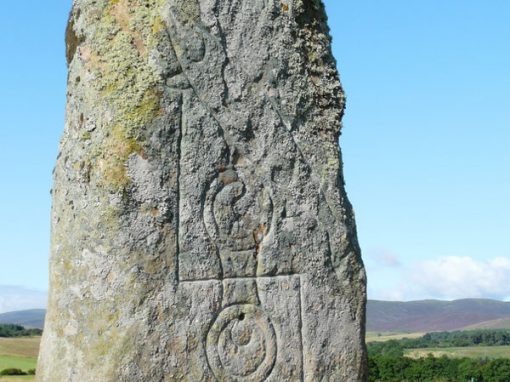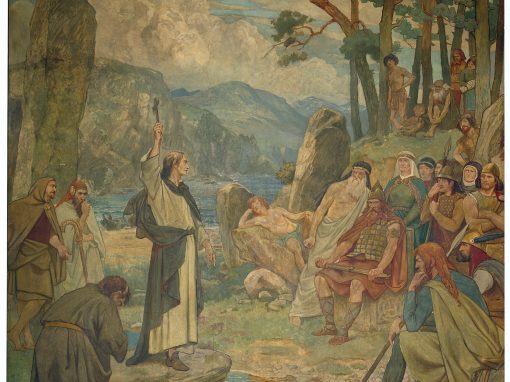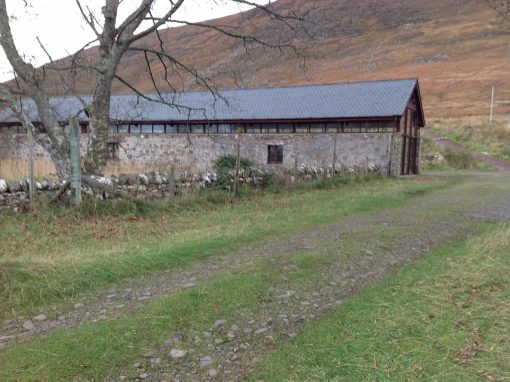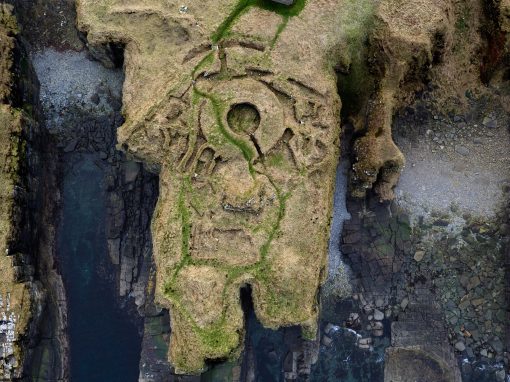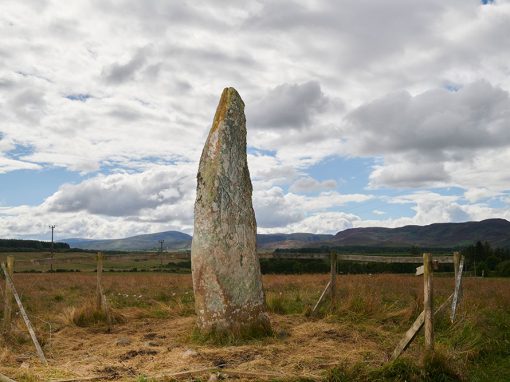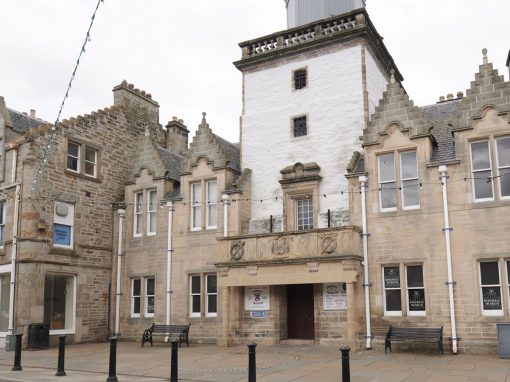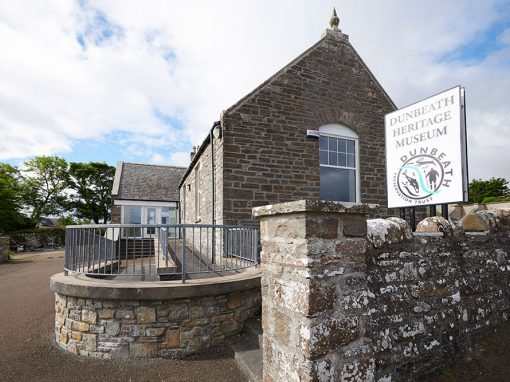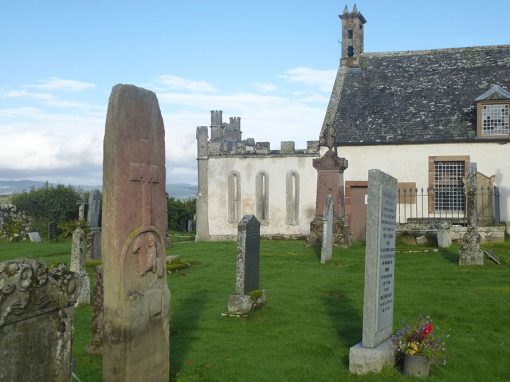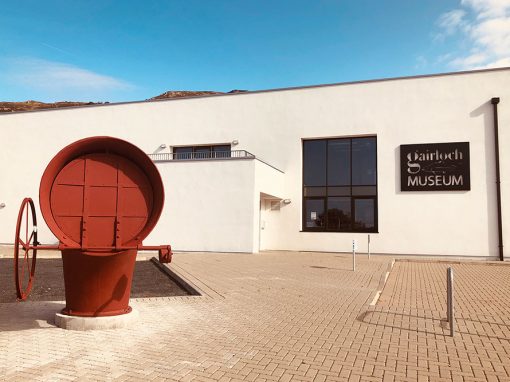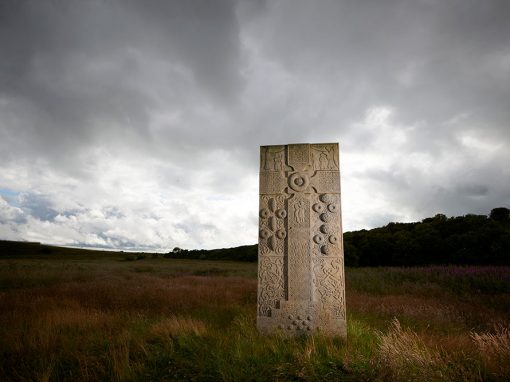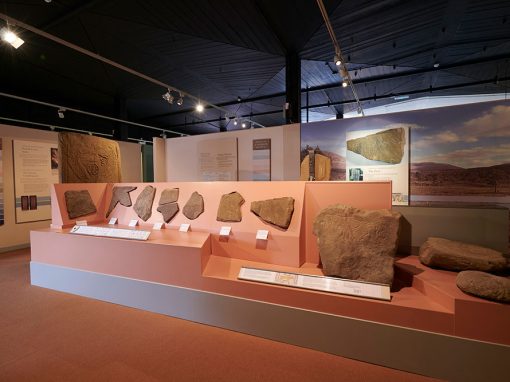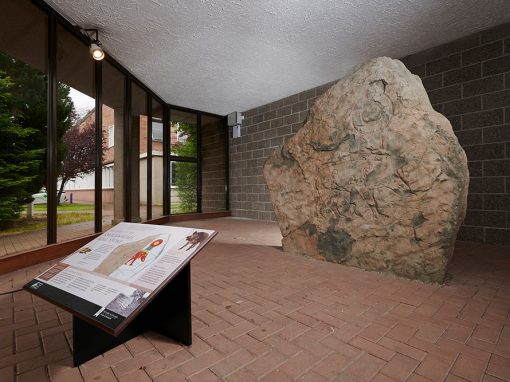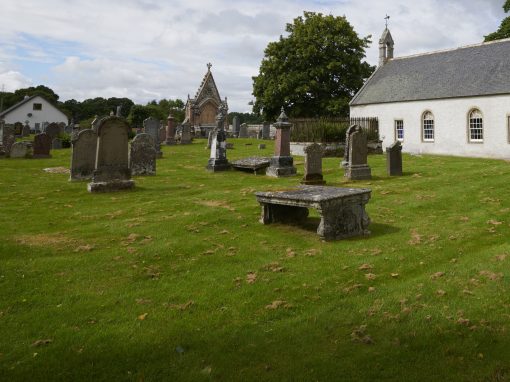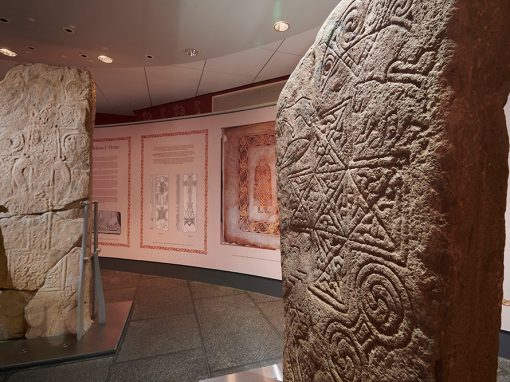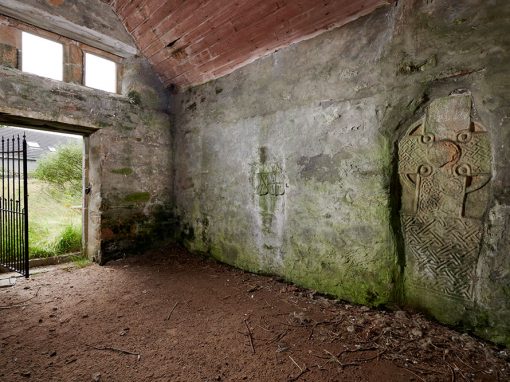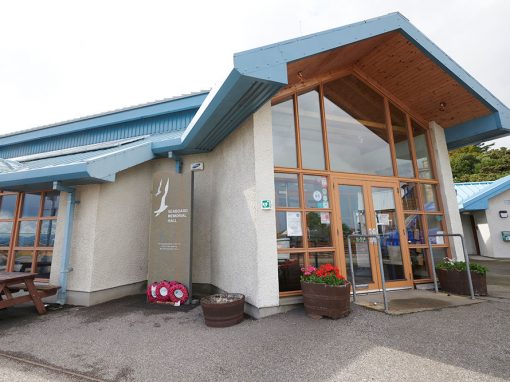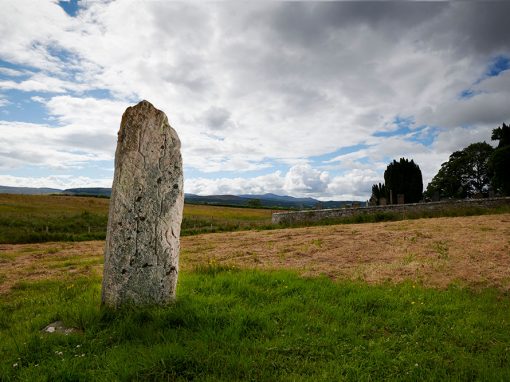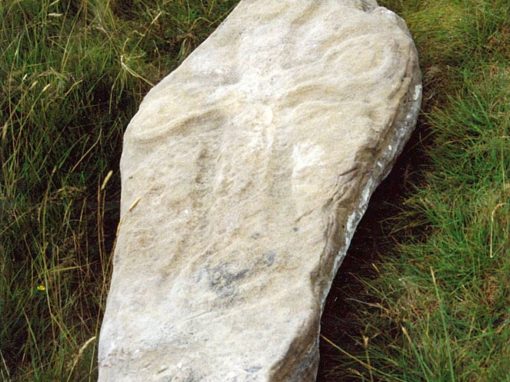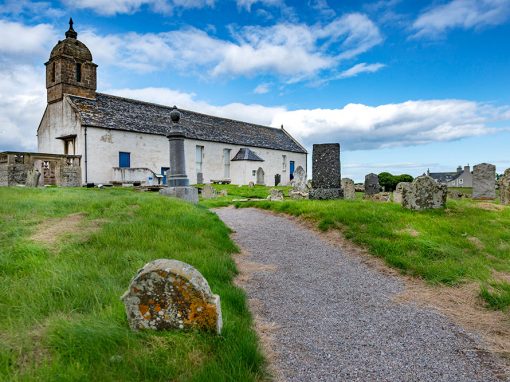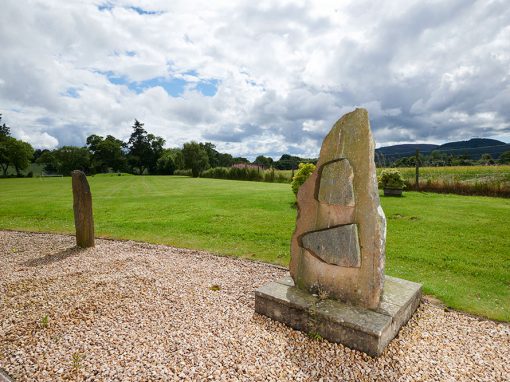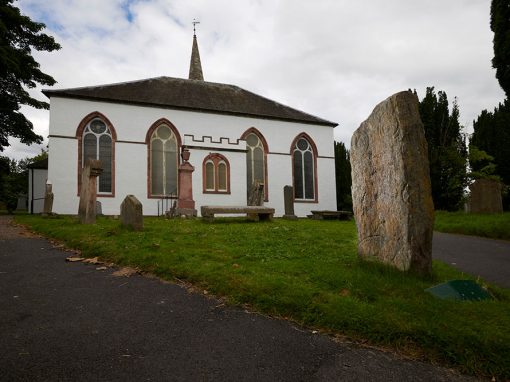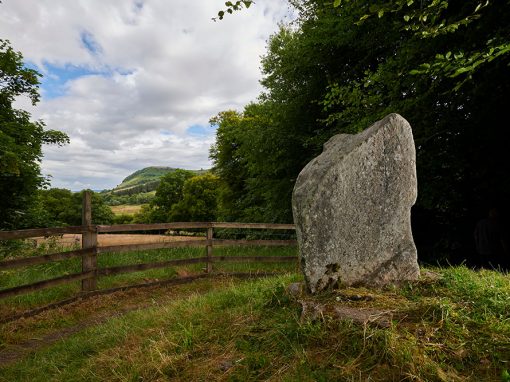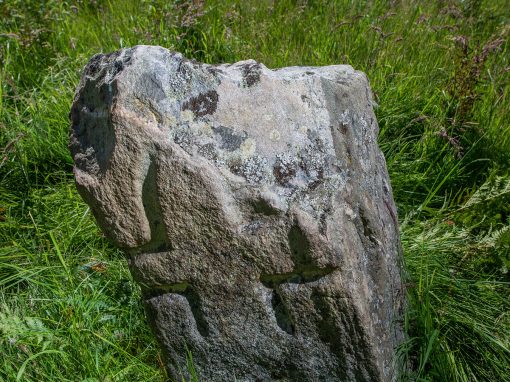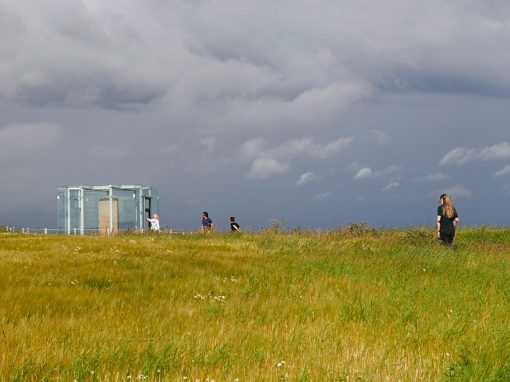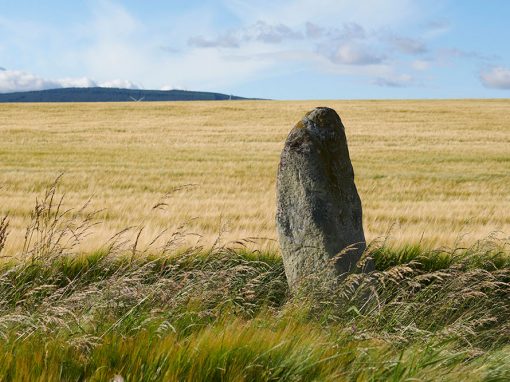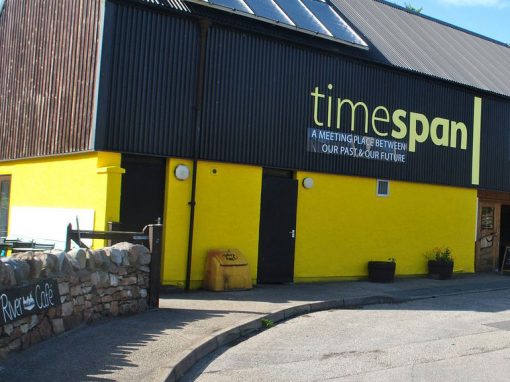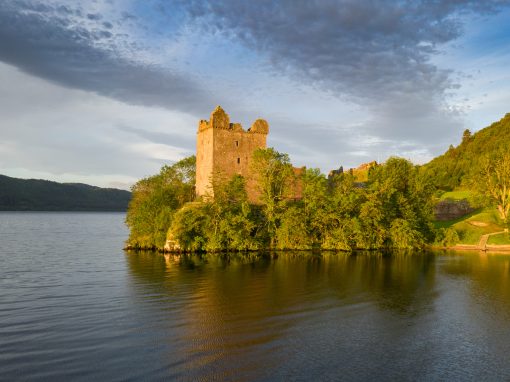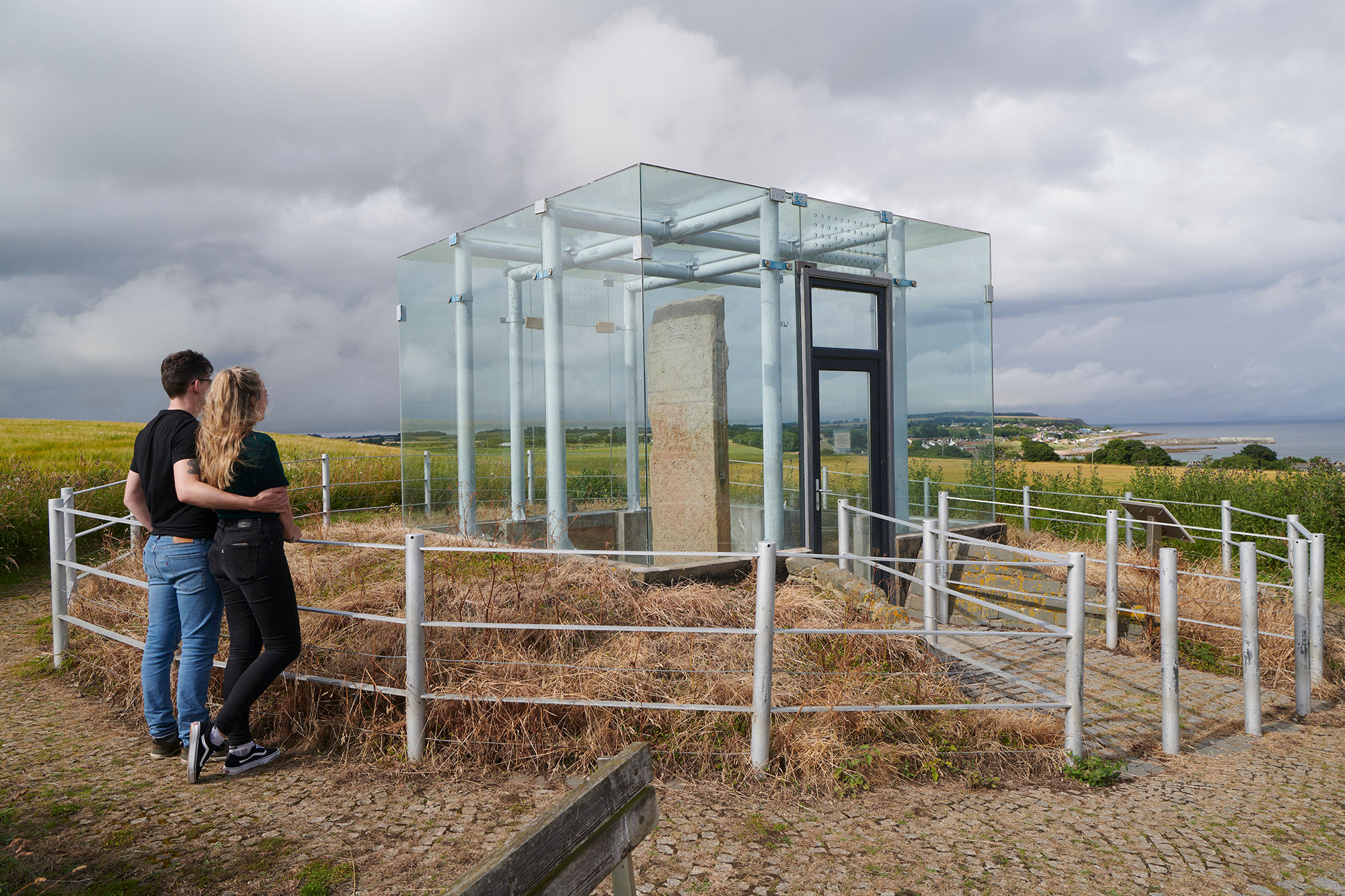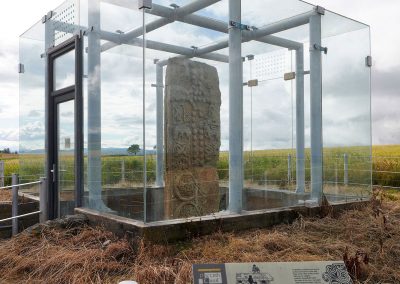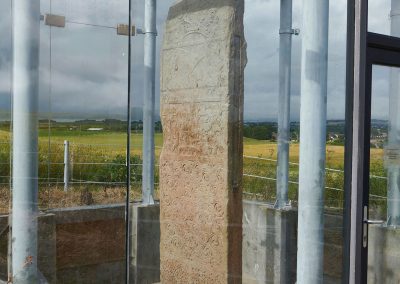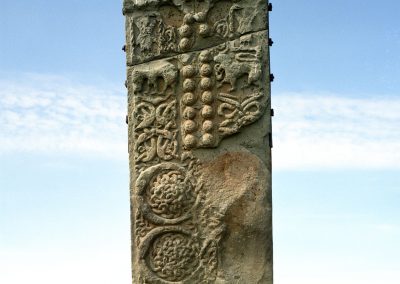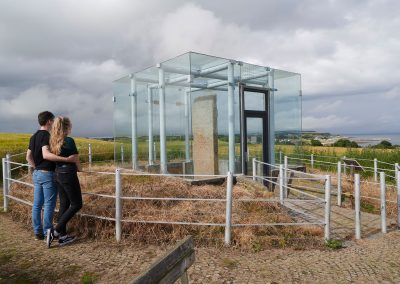The Shandwick Stone
Location
by Tain IV20 1XQ
Accessibility and amenities
Access over uneven ground.
See full details below.
Entry: free
The Shandwick Stone
Location
by Tain IV20 1XQ
Accessibility and amenities
Access over uneven ground.
See full details below.
The Shandwick Stone
Clach a’ Charraidh
A magnificent and intricately carved large cross-slab (around nine feet /three metres high) standing on its original site overlooking the Moray Firth. The Shandwick Stone, along with the Nigg Stone and the Hilton of Cadboll Stone, is evidence of the important role of the Tarbat peninsula in Pictish times, and the three stones may well be linked to the major Pictish religious site at Tarbat.
One side of the stone (on landward side) has panels including a busy scene of birds, beasts and human figures and a fantastic pattern of spirals. The other side shows a cross decorated with spiral work and surrounded by angels, animals (perhaps references to biblical stories), and complicated patterns of snakes and interlace.
The Shandwick Stone is just one of the amazing Pictish sites in this area. See Easter Ross (Tarbat) Peninsula itinerary for further details.
If you are travelling between the Black Isle and the Easter Ross (Tarbat) Peninsula, why not use the Cromarty Ferry (seasonal service)?
Further information
The designers who worked on the Shandwick Stone and other stones in the area were certainly not working alone. They must have known of the Christian decorated manuscripts of Lindisfarne and Iona, along with the metalwork and sculpture of Northumbria and Ireland. Elements of the carving on the Shandwick Stone are complicated and unusual and occur also on the Hilton of Cadboll Stone, the Nigg Stone, and on fragments found at Tarbat .
In 1986 a Trust was formed to raise funds to have the Shandwick Stone restored and conserved by the Historic Buildings and Monuments Workshop at Newbattle Abbey. It was returned in the summer of 1989 and erected within a glass shelter bought from the 1988 Glasgow Garden Festival.
The stone’s Gaelic name ‘Clach à Charraidh’ means ‘stone of the grave plots’. A burial ground was recorded here in 1889 that was last used during a cholera epidemic in 1832.
Accessibility and amenities
No entry fee
Local amenties at Seaboard Centre
Public toilets
At Seaboard Centre
Free parking
Informal roadside parking
Less than 200m from parking
No wheelchair access
Access via stile and over cobbled path.
Find more like this
